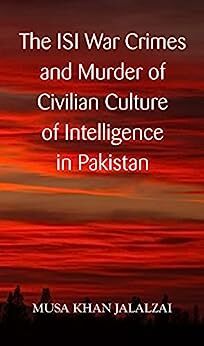Lawrence Freedman, (New York, 2019). pp. 378.

amazon.com
The Future of War, A History, tackles 150 years of musing on the future of war. More specifically, it presents a thematic survey of the end of conflict and its pitfalls.
The work is divided into three sections, each dealing with the themes of a particular epoch. Part one details the rise of industrial inter-state war from the 1850s to the end of the Cold War. Here, Freedman highlights how ‘future war’ would evolve from the quest for a decisive battle to managing nuclear confrontation.
Part two focuses on the post-Cold War ending in the post-9/11 period. Here we find an academic field adrift in uncertainty, with hordes of strategic analysts and horizon-scanners denuded of their raison d’etre. With the Soviets gone, future wars, as depicted in 1980s classic films–if such phrasing is permissible–Threads and The Day After are no longer the wars of the future, even though nuclear weapons persist.
Part three runs from 2010, covering the rise of extreme complexity in conflict. That is to say that the current views of modern conflict have built upon prior experiences; we are now faced with a situation of great complexity. The two critical themes explored here are information technology and its ramifications for war; and the environmental impact on warfare.
Freedman argues one’s concept of future war is a product of one’s time and frequently falls victim to availability bias. We can see this in the example of Graham Allison, who in the immediate post-9/11 period proclaimed the future of a conflict was between the West and Islam; yet a decade later, he was warning of a future of war between the US and China—why the shift?
Freedman makes it abundantly clear that forecasting future conflict is inherently dangerous. If one is correct, there will be a conflict — people will die; if one is incorrect, preparations for conflict will be misguided — and people will die.
Moreover, forecasting future conflict falls prey to learning the wrong lessons: Pearl Harbour and Operation Barbarossa are cited as examples of the failure to expect danger rather than incubators of disaster. As Freedman excellently notes fears of a ‘new Pearl-Harbour’ highlight the failure to learn appropriate lessons: pre-emptive attack does not equate to victory. More often, such actions are the harbinger of defeat for the aggressor, not the victim.
Overall, Freedman presents a work accessible to non-specialists and reasonably detailed, considering its brevity. However, the anglophone focus is unfortunate, for many excellent works from thinkers as diverse as Georgi Isserson, Heinz Guderian, or Andre Beaufre, whose inclusion would have added immensely.
Finally, the temporal division of the work makes it somewhat imbalanced as the years 1850-1990 have the same space as 1990-2010 and 2010-2017, respectively. Understandably, this was done to keep the work short, but it means that some aspects receive treatment which not aligned (in this reviewer’s opinion) with their historical weight. Regardless, this is a strong, well-thought-out book that elaborates its core argument excellently.
Dermot Nolan has spent 12 years in the Army Reserve in Ireland, where he served in the Artillery Corps. He holds a master’s degree in Military History and Strategic Studies from the National University of Ireland at Maynooth. In addition, he has a master’s degree in International Relations and International Security from the Rijksuniversiteit Groningen in the Netherlands. His fundamental interests are modern land- and air-power and nuclear deterrence. His work has been published in European Security and by Finabel-The European Army Interoperability Centre. He currently lives in France, where he is working on mastering the language.






